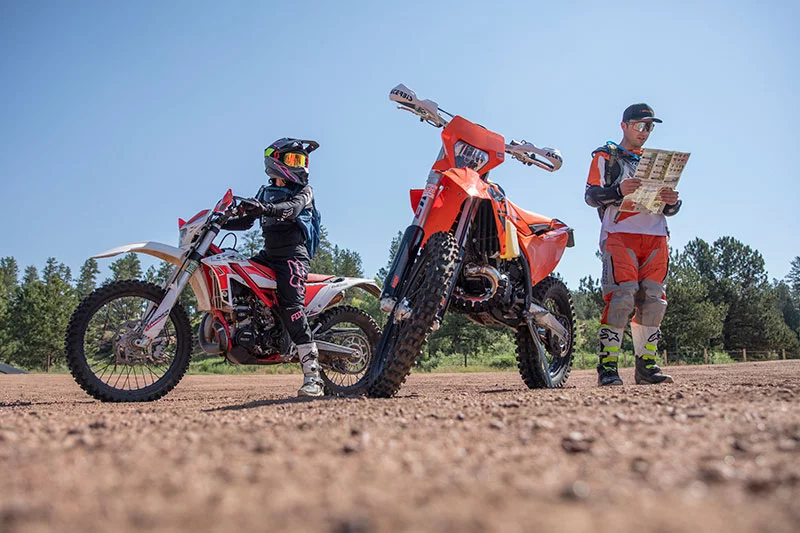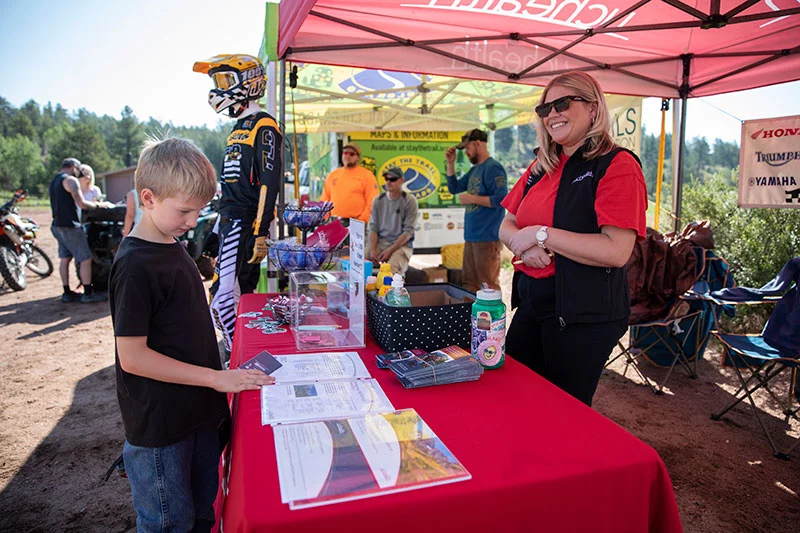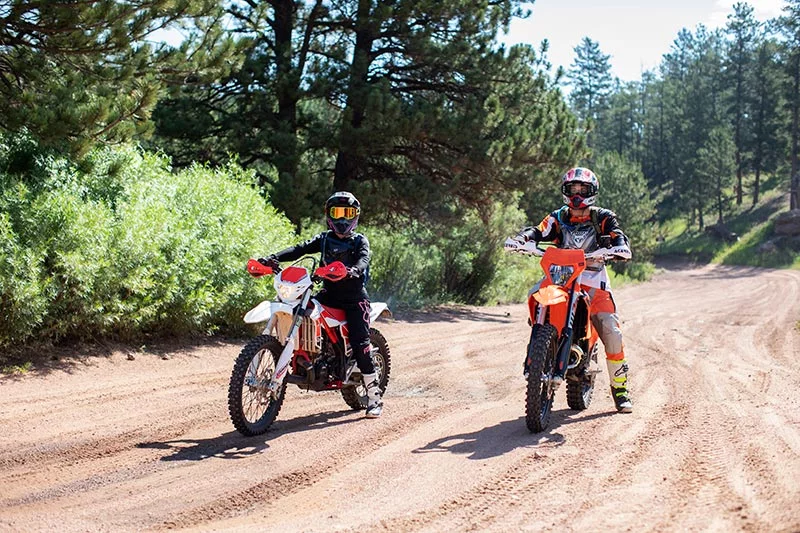
The young couple heard a UCHealth LifeLine helicopter circle over their campsite off Highway 67 in southern Colorado on a beautiful July morning and watched it land in a nearby field.
Austin Gipson and his wife, Alena Baker, thought someone might be injured – perhaps someone on an all-terrain vehicle (ATV).
Austin has been riding ATVs since he was a kid growing up in Colorado Springs, and he’s seen far too many accidents on local trails. On this summer morning, though, the LifeLine medical transport helicopter made a picture-perfect landing as part of an educational event co-sponsored by UCHealth and a group called the OHV (or off-highway vehicle) 2025 Workgroup. The group members work to keep people and trails safe.
So, it was fitting that after Austin and Alena saw the helicopter land, they hopped on an ATV and rode over from their family’s nearby campsite to check out the helicopter along with booths set up in a trailhead parking lot.
Austin ticked off the list of ATV safety gear his father always taught him to wear.
“Helmets, boots, goggles, gloves,” said Austin, who is 22. “Those were a must. If he saw us without one of those, he’d yank us off (the ATV).”
A few minutes later, Austin’s father, Michael, and two of Austin’s younger siblings arrived on a four-wheeler. Sure enough, Erin Keogh, 12, and her brother, Damien Keogh, 8, were wearing full-face helmets and goggles.

“It’s very important to wear the helmet because without it, you could get really hurt,” Erin said.
A spike in accidents leads to new education efforts
The increasing popularity of ATVs and other OHVs has caused an increase in the number of injured riders who end up in ERs. Some arrive at hospitals on their own, while others need help from helicopters and ambulances. Follow these safety recommendations Source: OVH 2025 Workgroup To learn more about the workgroup and upcoming events, email [correo electrónico protegido] Are you heading out on an ATV?
Last summer at Hospital Regional de Pikes Peak, health care providers saw the 10-bed emergency room fill up after a multi-passenger OHV rollover accident. ATV accidents are the second-leading cause of ER visits at the Woodland Park hospital, said Holly Heise, UCHealth outreach program manager-trauma services and a registered nurse.
UCHealth providers saw the need for education and safety advocacy in the ATV community to help keep people from getting injured in the first place.
So, injury prevention specialists teamed up with other organizations to create an education program and organize the July 18 event, where the LifeLine helicopter made an appearance. Austin Gipson and other members of his family were among those who stopped by the event, which took place at the Rainbow Falls trailhead about nine miles north of Woodland Park. The goal of the event was to educate the public about the potential dangers of ATVs and OHVs and how to ride safely and prevent injuries. Other participating organizations were Stay the Trail, Ute Pass Regional Paramedic Services, Mountain Communities Fire Department y Pike National Forest. Each had a staffed table, where riders could also gather local information and talk with experts about trails, maps, safety and more. The LifeLine crew offered tours of the helicopter, and Sasquatch made a guest appearance at the UCHealth table.
“We realized we needed to start doing something,” said Hannah Carlo, an injury prevention specialist at UCHealth Memorial Hospital Central and a paramedic. She received a call from Heise about the spike in ATV accidents and a request to see what could be done.
It would prove to be a daunting task.
Colorado data on ATV injuries are not maintained consistently across various agencies, so it’s difficult to know the extent of the problem, Carlo said. And there are no coordinated safety education efforts in the state. But based on the view from inside the emergency department, it’s clear that rider education is needed, she said. She facilitates what the group calls the OHV 2025 workgroup. They want to enhance the safety culture at various recreation locations in southern Colorado, with one goal in mind: preventing injuries. She and the others who helped create the safety program hope it can be replicated across Colorado so riders will be safer. “I hope we can get some traction – no pun intended,” Carlo said.
Helmets save lives. That’s why safety experts held a drawing for free goggles and a helmet voucher
UCHealth experts teamed up with safety pros at the other organizations to create a brochure packed with information about ATV safety and resources and started planning outreach events in southern Colorado where they could share the information. Earlier this summer, the group hosted an event at the Lake George Fire Department and also at a Woodland Park summer festival. Carlo recently presented the group’s work to the Colorado Department of Public Health and Environment’s Emergency Medical and Trauma Services Advisory Council Prevention committee. Carlo told the committee that ERs nationwide treat more than 100,000 ATV injuries annually, according to the Consumer Products Safety Commission.
During the Rainbow Falls event, Carlo and her colleagues talked with more than 60 visitors, handed out lip balm, fans and other items. Erin and Damien Keogh scooped up free stickers and immediately put them on their helmets. Carlo encouraged visitors to enter a giveaway to win a $400 helmet voucher and goggles. The helmet giveaway is in partnership with Apex Sports in Colorado Springs. Encouraging helmet use is key, because the risk of head injury drops 69% for riders who wear one, Heise said. The risk of death from an ATV accident drops 37% with a helmet.
“Most, if not all, of these are preventable injuries if people would drive safely and take precautions,” Heise said.
ATV accidents are one type of summer trauma, many of which are preventable with these tips.
Craig and his wife, Basmah, arrived in the Rainbow Falls trailhead parking lot with their off-road motorcycles wearing boots, full-face helmets, glasses and protective clothing. The couple preferred to be identified by their first names. Craig said his father taught him to ride. He stopped by a few tables at the trailhead event before heading out on their bike with Basmah.

“We always want to ride another day,” he said. “And we don’t want to hurt anyone else.”
Michael Gipson and his family entered the giveaway for the helmet voucher and goggles – and won the drawing later that morning.
Asked if he sees a need for safety and trails education, Michael Gipson didn’t hesitate.
“Absolutely.”
